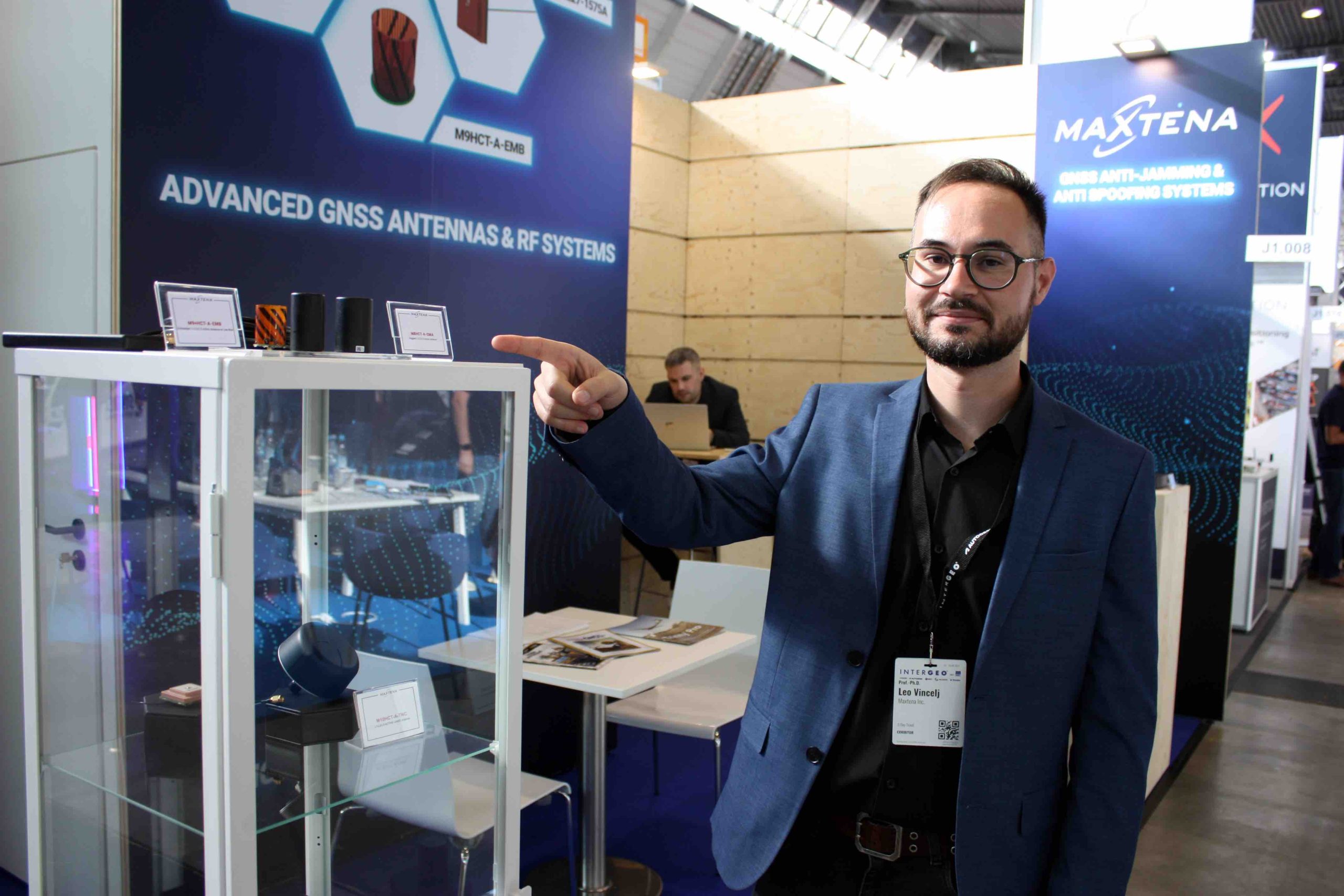Maryland-based GNSS antenna manufacturer Maxtena is working on a new anti-jamming, anti-spoofing solution. Speaking at InterGEO 2024 in Stuttgart, Maxtena Antenna Engineer Leo Vincelj told Inside GNSS, “Right now we’re developing our own CRPA [controlled reception pattern antenna], based on a two-by-two patch plan.” CRPAs are specifically designed to reject interference signals like those used in jamming and spoofing attacks.
“There’s a big demand right now for this kind of solution,” Vincelj said, “Lots of people are asking about it when they see our sign.” The words ‘Anti-Jamming and Anti-Spoofing Systems’ were prominently displayed at Maxena’s InterGEO stand. “They are very interested and they want to know all about what we’re offering, and that tells you how important this problem is right now.”
The Maxtena team welcomed to their stand some very concerned delegates from a certain Eastern European country, recently the target of attacks by one of the world’s most powerful military nations. Among other things, GNSS jamming and spoofing attacks in the affected and adjacent regions have become international news. Vincelj, who is based in the Maxena’s European office in Zagreb, Croatia, said, “They told us they were looking at as many CRPA-type antennas as they could get their hands on, including ours, which they will take home and test in their home environment.”
A known quantity
Maxtena is of course already known for its extensive line of lightweight, efficient and affordable GNSS antennas. “We have our helicoidal and patch antennas, and other varieties,” Vincelj said. “We have single element solutions, which are mostly used for the drone industry, but also in geodetics and in all kinds of other applications, for anyone who requires precise GNSS.”
The company delivers antennas in their own housings, or to be embedded within equipment or housings provided by customers. “One of our latest antennas is this M10 [M10HCT-A-TNC],” Vincelj said, “which is a highly efficient, active GNSS triple band, working in L1, L2 and L5. This one has an active gain of 35dB, which is impressive, and it’s also low noise. Then we have a new double-band patch antenna, covering L1 and L2. We offer lots of different solutions, anything from GNSS, LT, Wi-Fi and Bluetooth, and we can put all of that or any combination into a single housing.”
Vincelj said business is pretty good. “From an engineering perspective, we’re doing lots of new products. We’re working on a new L1, L5 antenna, a totally new design. For me, as an engineer, this is a great, creative space to learn in, and we provide great customer service; our engineers speak directly to our customers and answer their questions. And of course there’s the Maxtena price point, which is very hard for anyone to compete with.”
Maxtena is currently collaborating with a French company on a series of new, precise-positioning, GNSS-equipped, geodetic devices, including survey-grade geosticks.






